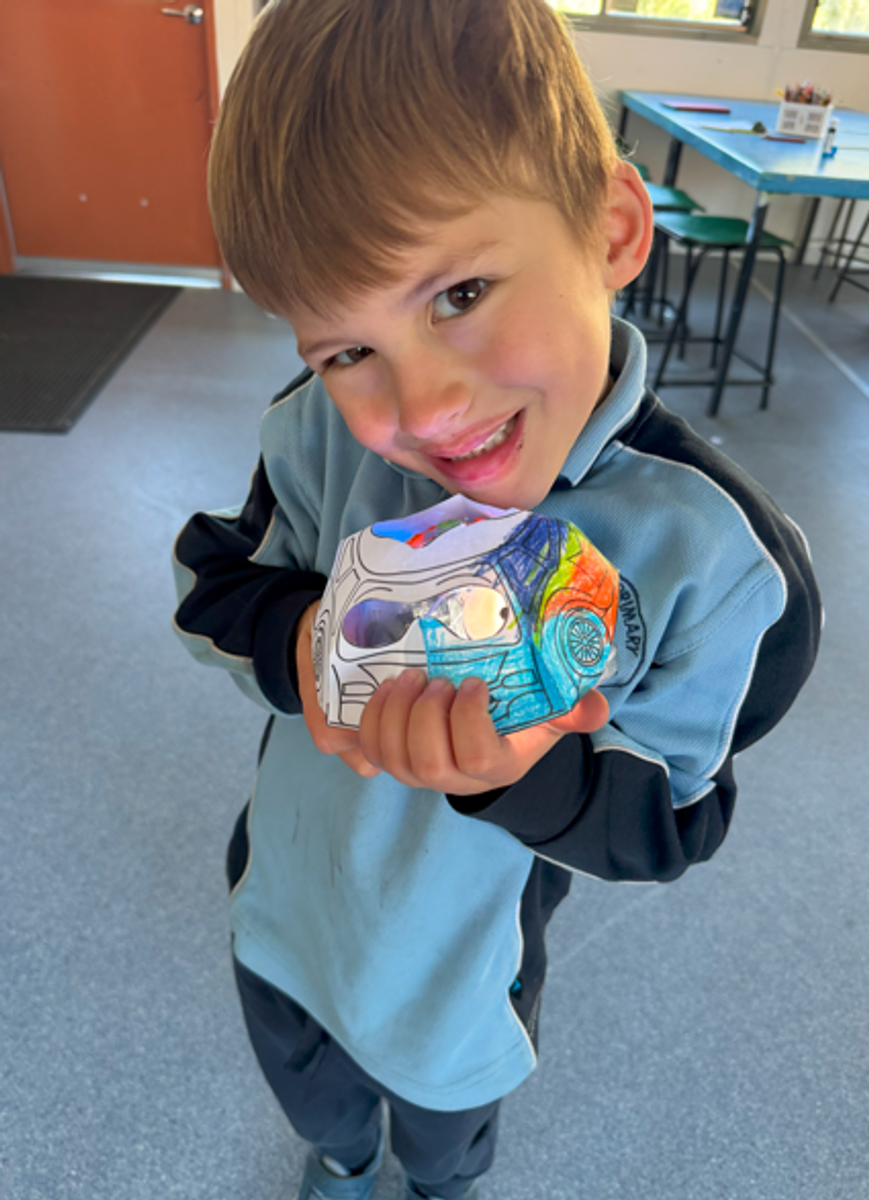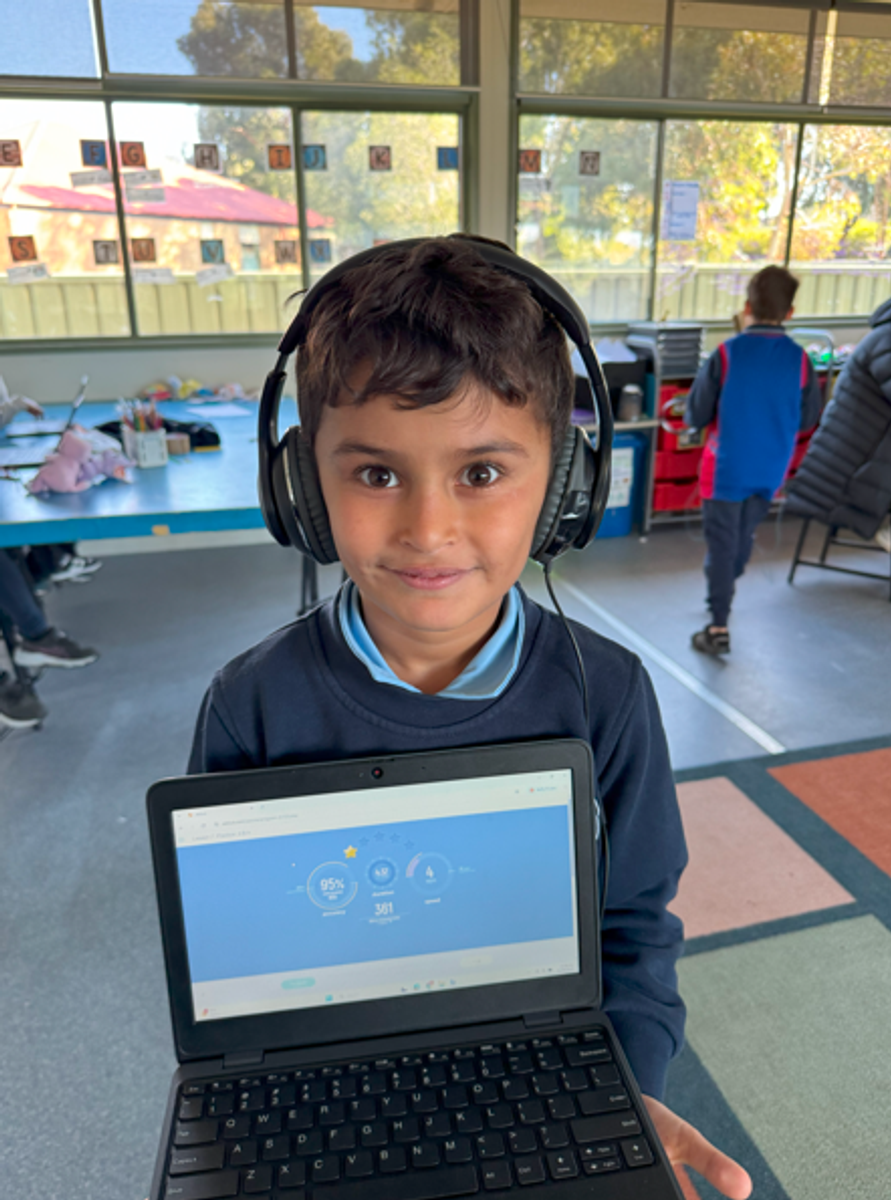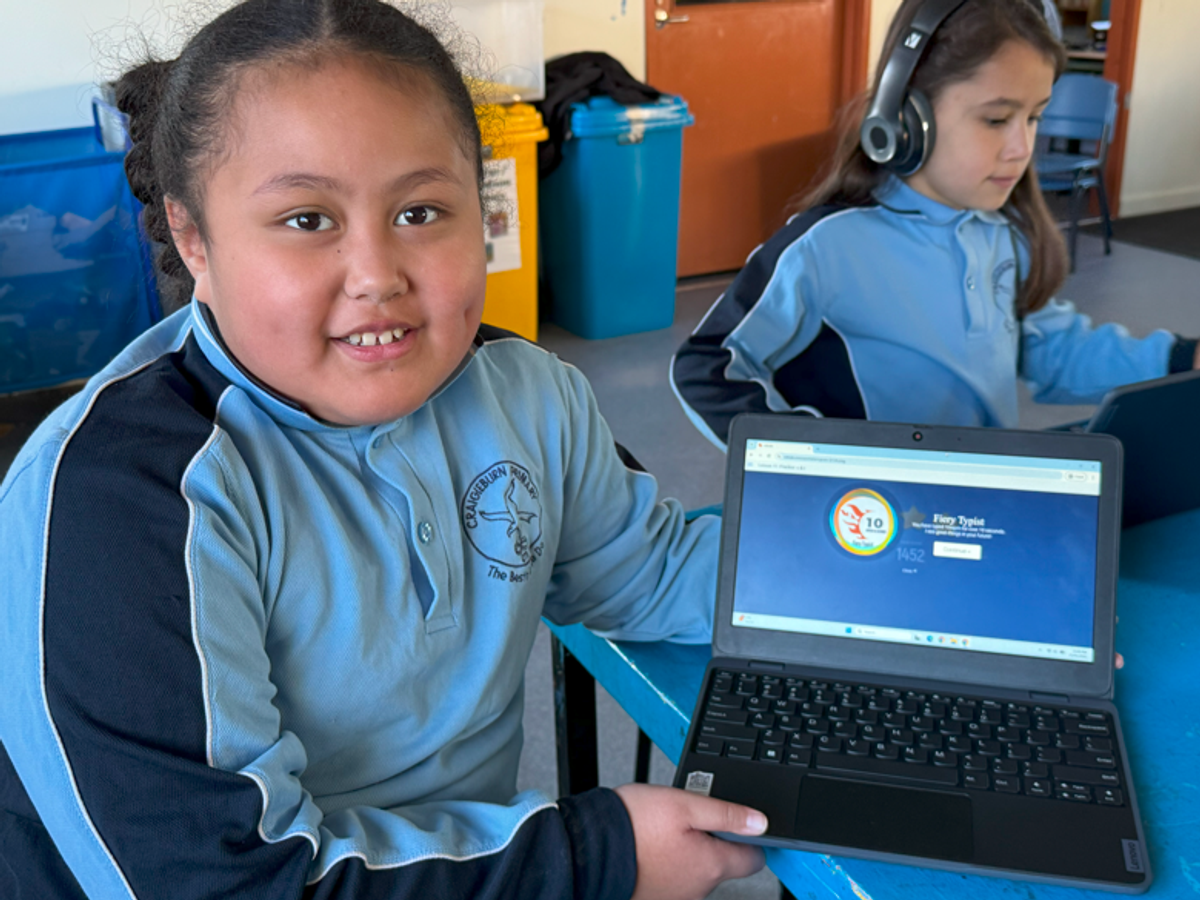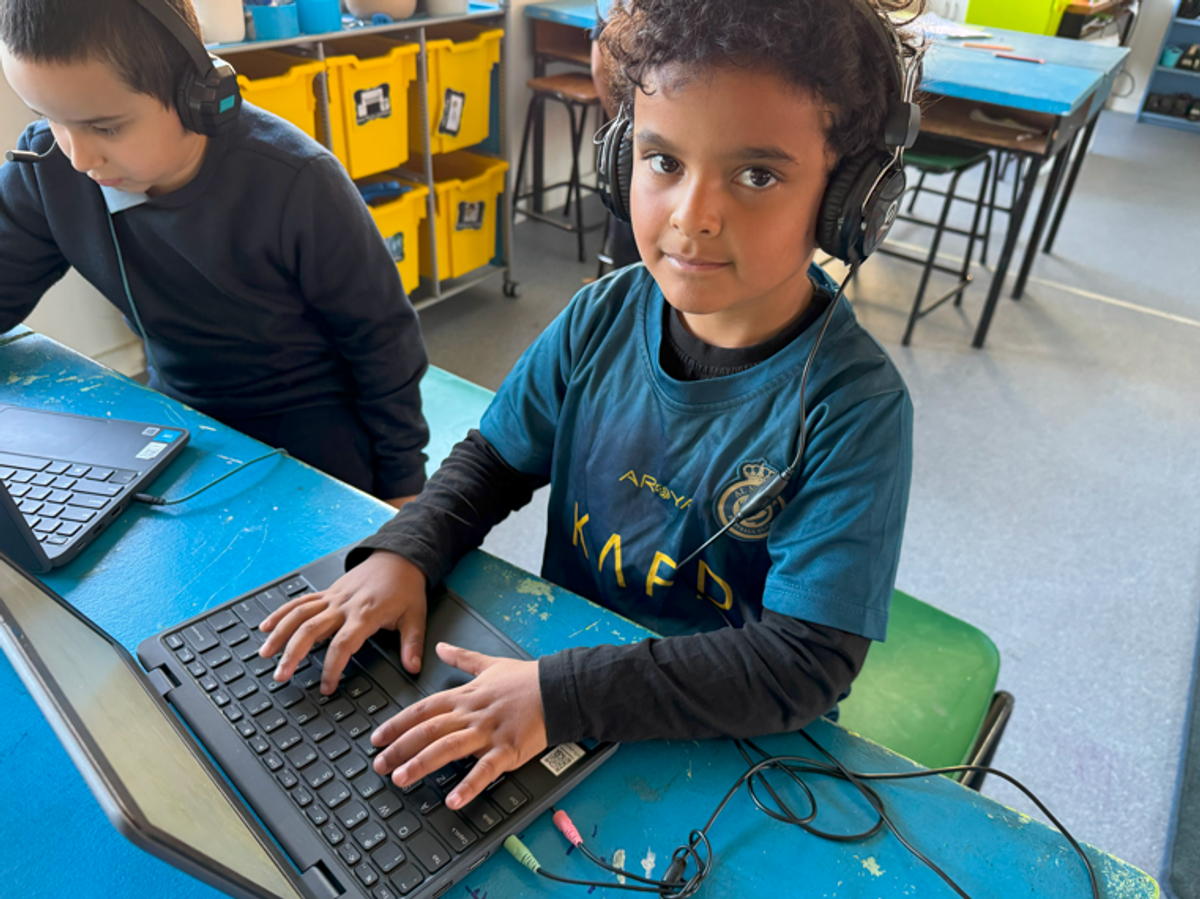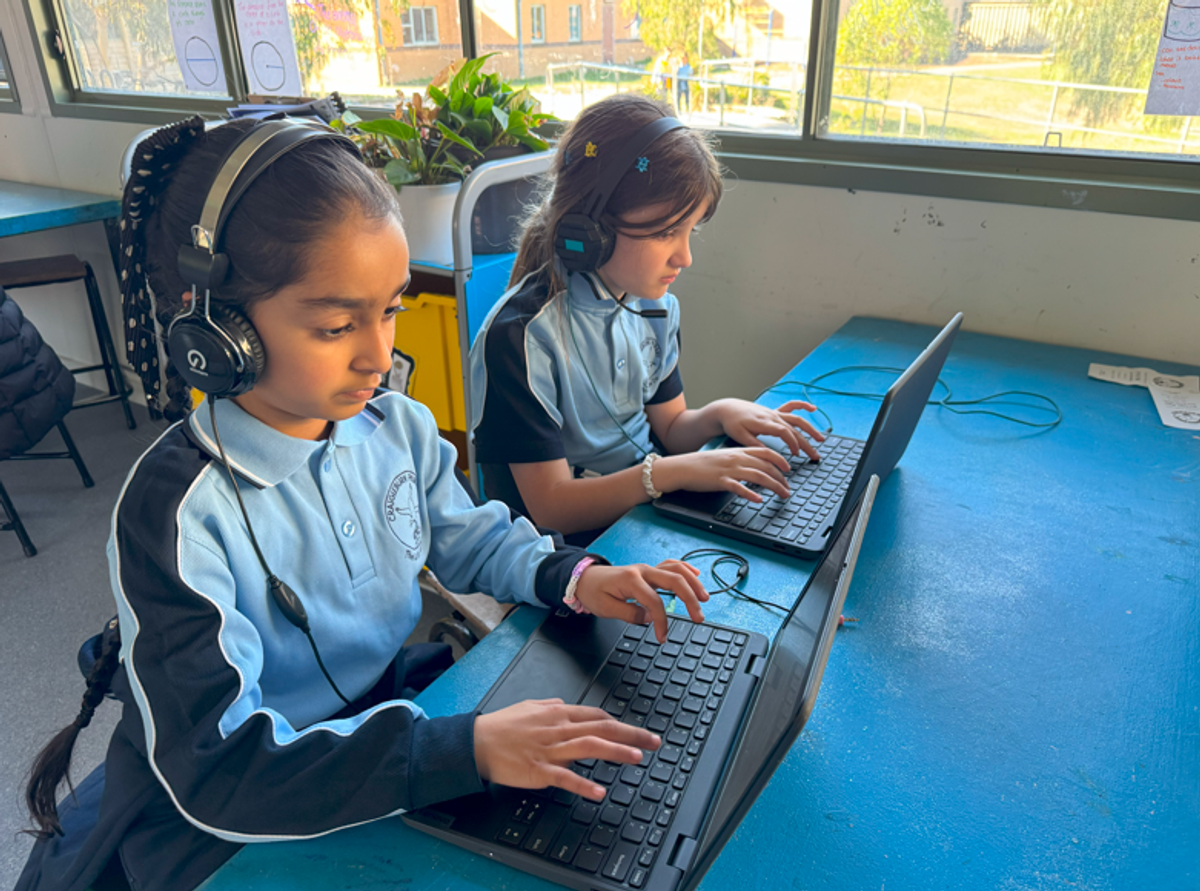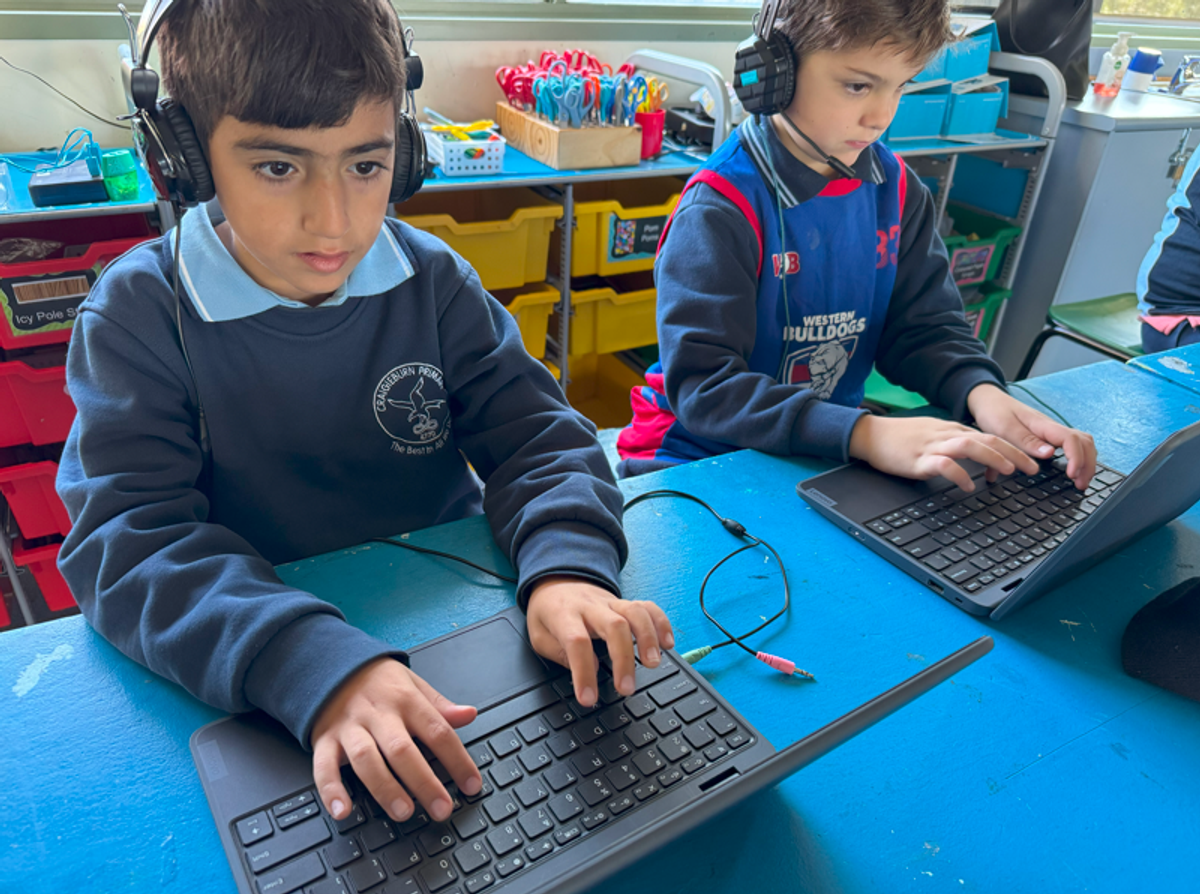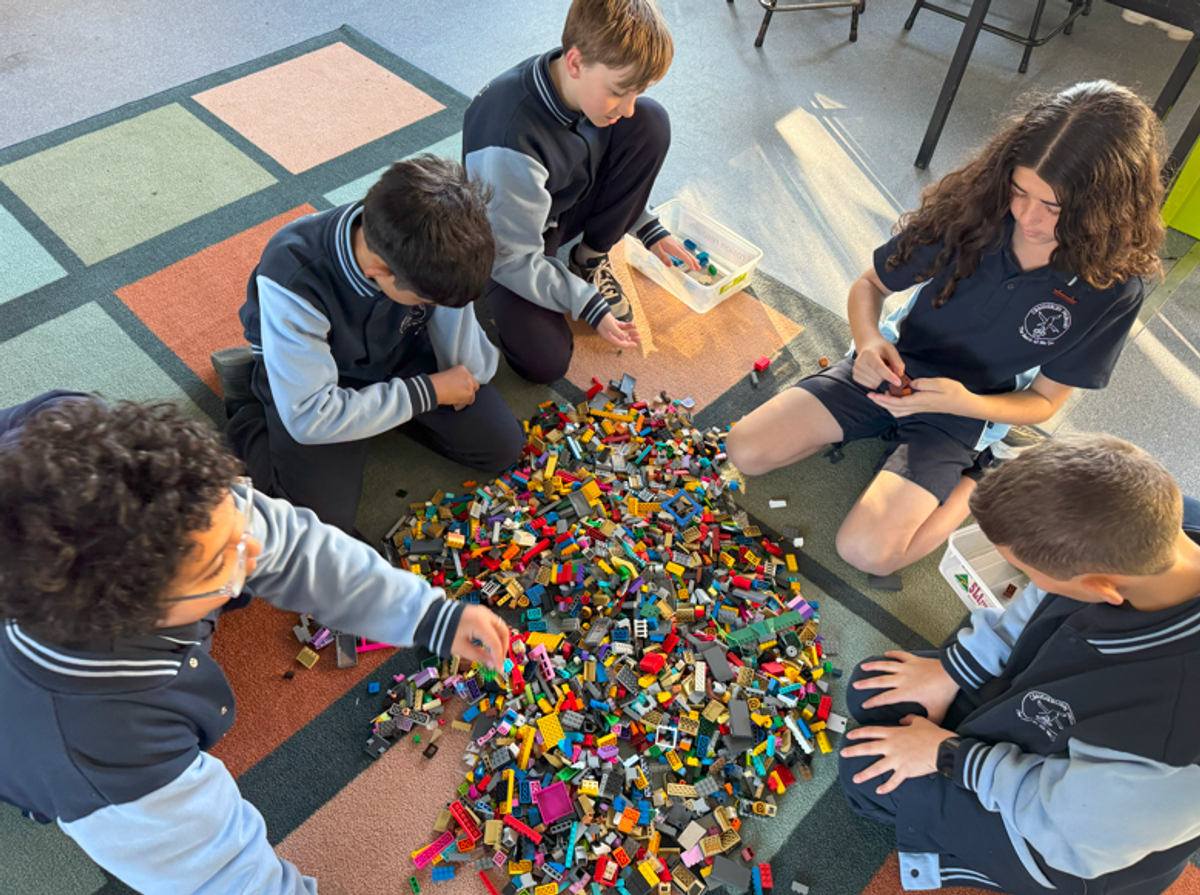Science Technology Engineering and Maths

Foundation
This fortnight, Foundation students have taken their Bee-Bot learning a step further by beginning to design and create Bee-Bot jackets—costumes that transform their robots into imaginative characters! This creative task has encouraged students to think about identity, design, and function, while continuing to practise their skills in sequences and directional language.
These personalised Bee-Bots are being prepared for use in an upcoming Bee-Bot Town simulation, where students will navigate their robots through a small model town using simple coding sequences.
Photo: Aydin (FB) with his Bee-Bot’s Jacket.
Year 1
This fortnight, Year 1 students have been consolidating their learning in ScratchJr, with a focus on demonstrating their coding skills to their teacher. Students showcased what they’ve learned throughout the term, including how to sequence blocks, animate characters, and use simple coding commands to tell a story or solve a challenge.
These demonstrations not only reinforced their understanding of basic programming concepts, but also built their confidence in communicating how digital systems work.
Year 2
This fortnight, Year 2 students have been developing their computer literacy and typing skills by learning how to properly use a keyboard. They have focused on correct finger placement along the home row, understanding that the small bumps on the F and J keys are there to help position their index fingers correctly without looking down.
Through guided practice, students are building accuracy, speed, and confidence in using a keyboard — an important foundation for future digital learning.
2B students practising their finger placement on the homerow of the keyboard.
Year 3
Year 3 students have continued working on their Peace with Nature project in Minecraft Education, where they are designing and building digital worlds that reflect environmentally friendly living. This fortnight, the focus has been on learning how to collaborate effectively, as students work together in shared Minecraft worlds.
They are developing skills in teamwork, communication, and resource sharing—learning how to listen to others’ ideas, assign roles, and solve problems together. These are essential elements of both the Design and Technologies and Personal and Social Capability curriculum areas, as students begin to understand that designing sustainable futures is not only about creativity, but also about working together to achieve shared goals.
Year 4
This fortnight, Year 4 students have been introduced to the early stages of media production by learning how to create a storyboard. They explored how storyboards are used to plan out scenes, organise ideas, and visualise the structure of a media product before filming or recording begins.
Students practised breaking their ideas into parts and representing them through a sequence of images and short captions, thinking about story flow, camera angles, and the intended audience.
Year 5
This fortnight, Year 5 students have moved into the design phase of their video game projects for the ACER STEM Video Game Challenge. They have been busy creating their own sprites (characters) and backdrops, thinking carefully about how visuals can enhance gameplay and storytelling.
Some students have been exploring AI tools to transform their hand-drawn sketches into digital cartoon characters, experimenting with how technology can support and enhance their creative process.
Year 6
This fortnight, Year 6 students have been building on their media production knowledge by learning how to plan and storyboard their own media projects. They are thinking carefully about how to structure their content, choose appropriate camera angles, and plan out scene transitions to best communicate their message.
Students are now beginning to create elements for their final media productions, choosing from a range of formats that suit their message and audience. Some students are working on stop-motion animations using LEGO, while others are experimenting with claymation techniques. A number of students are developing persuasive scripts for videos and podcasts, focusing on issues such as environmental stewardship, community values, and social awareness.
Students in 6B creating elements for their Lego stop motions, Jake has created a tree out of Lego.
PrintACar Competition:
The PrintACar Competition is now well underway, with student teams diving into the design and prototyping phase of their entries. Over the past fortnight, teams have been working collaboratively to create 3D-printed car prototypes, using their understanding of aerodynamics, engineering design, and digital modelling.
Alongside their prototypes, students are developing a project portfolio that documents their design process, testing, and refinement.
Adrian and Jagman using TinkerCAD to design their 3D car to be printed.
